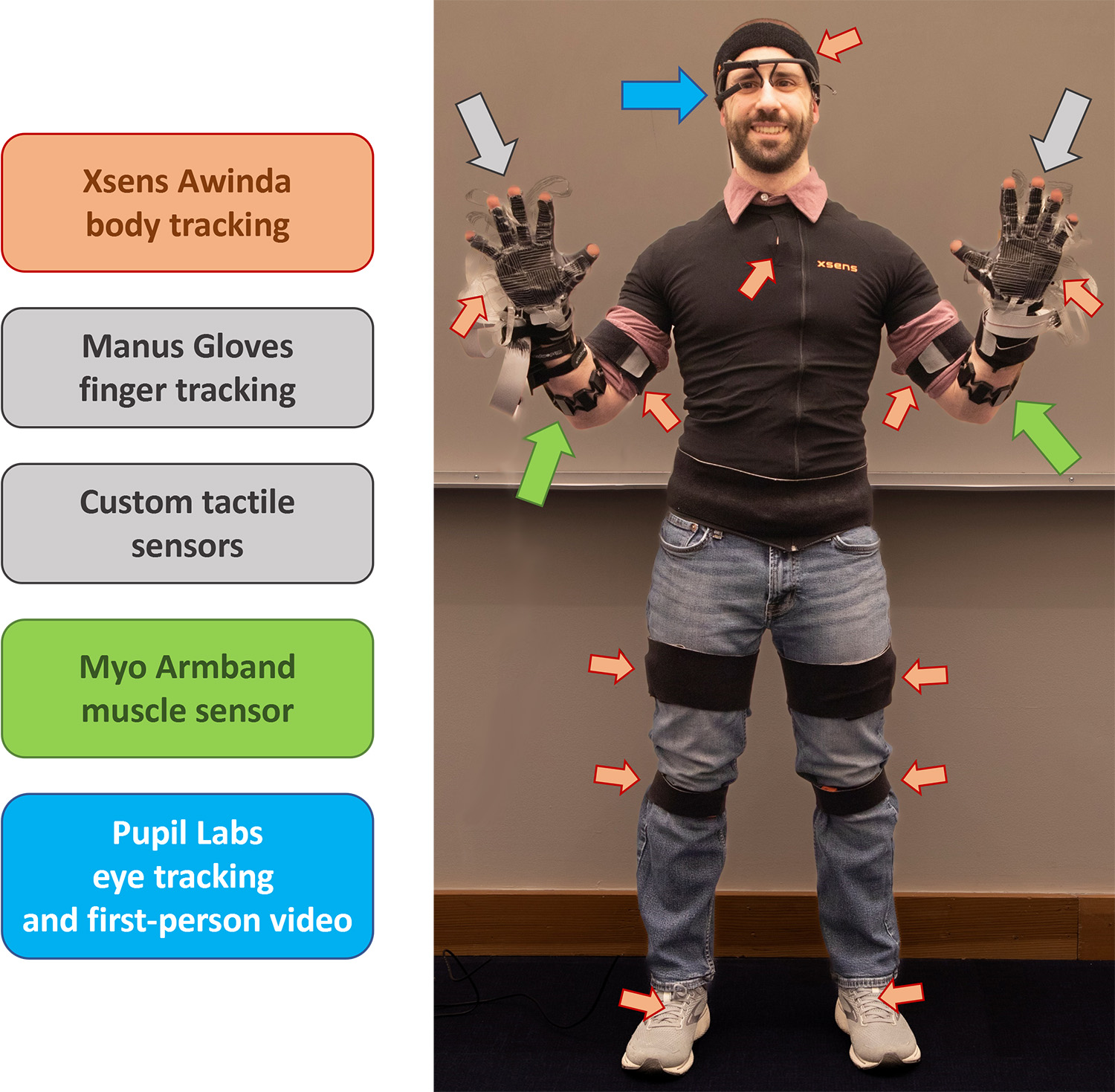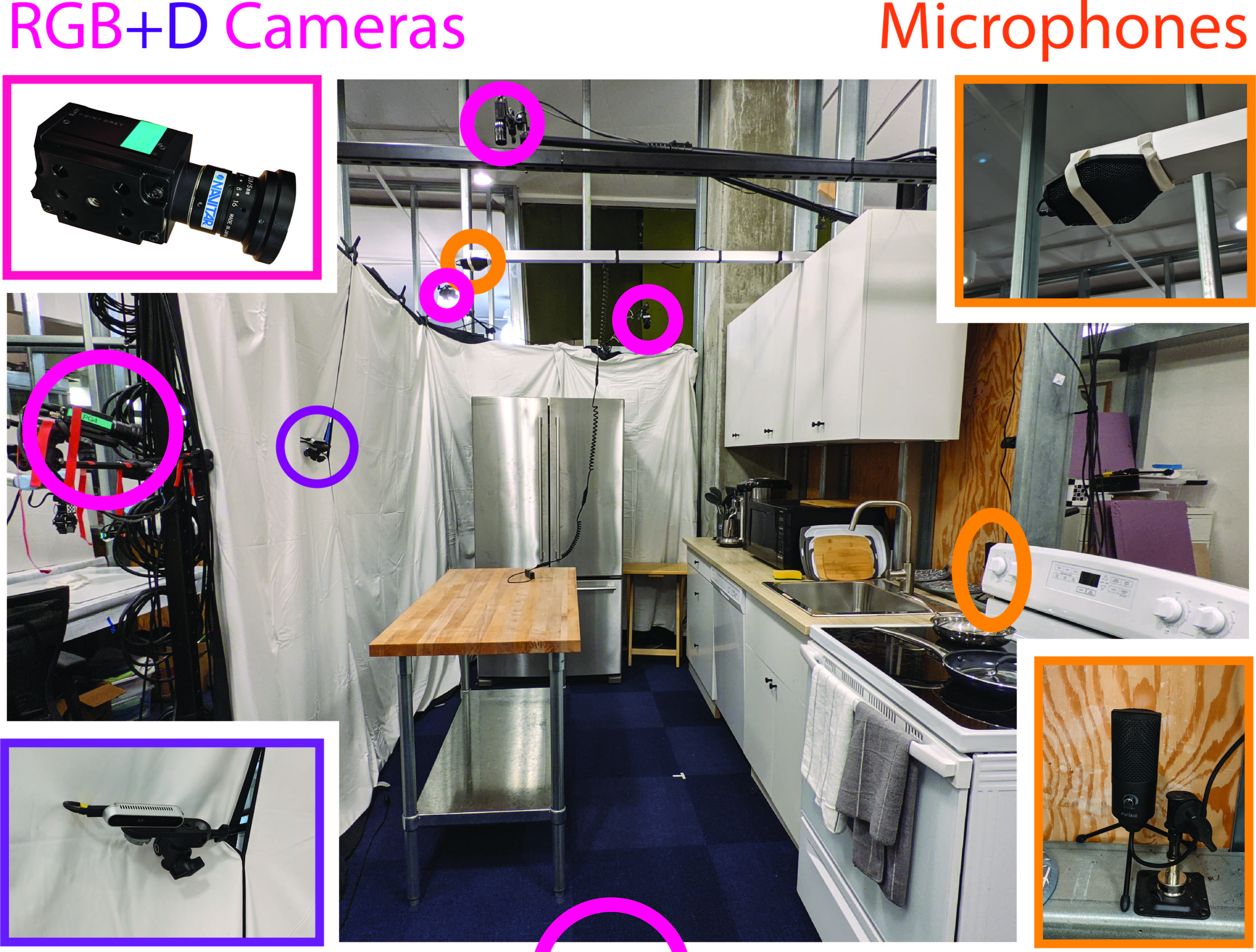The activities highlight a wide range of manipulations and action sequences, to explore both lower-level control tasks and higher-level reasoning tasks.
Peeling and slicing are dexterous activities requiring in-hand manipulation with dynamic grasps, coordination between hands, and tool use. They are well-suited to a multimodal dataset since aspects such as hand pose, motion paths, force, and attention are all critical to successful completion. Slicing is repeated with cucumbers, potatoes, and bread, while peeling is repeated with cucumbers and potatoes; the disparate hardness and shapes precipitate disparate forces, techniques, and even tool selection. They can also be performed by both experts and novices, but with different techniques and efficiencies. In addition to these low-level motion and high-level reasoning aspects, the tasks are also interesting for computer vision pipelines since the objects change appearance and subdivide.
Spreading almond butter or jelly on bread uses a knife in a different way. It involves two-handed coordination, varying object appearances, and motions that are repetitive while adapting to the task and object. The consistencies of almond butter and jelly also lead to different techniques.
Opening and closing a jar are simpler manipulations but still require precise coordination and subtle motions. Tactile forces and muscle activity are also key components of these operations.
Wiping pans or plates with towels or sponges all aim to clean a flat surface but can have quite varied approaches. For example, large or small circular or linear periodic motions may all accomplish the goal. The amount of force applied throughout the motion is also a key component. Whether a person, or ultimately a robot, chooses a particular strategy may depend on preference or the object state.
Pouring water can be informative for prediction or classification pipelines by introducing a transparent liquid that can be hard to model, manipulate, or detect. Each object also continuously changes weight.
High-level tableware tasks such as setting a table or loading/unloading the dishware introduce more task reasoning. They combine longer sequences of dexterous manipulations with abstracted planning, catering to pipelines that focus on motion primitives as well as action sequence prediction.




